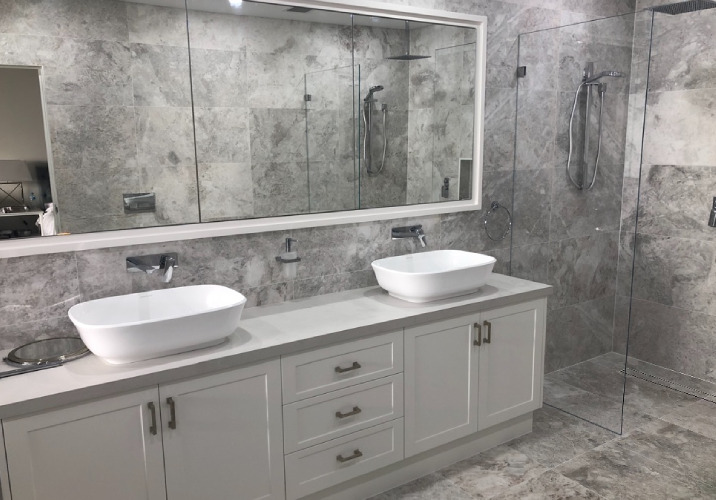No matter how large or small your bathroom is, the vanity should be its centrepiece. An attractive, well-constructed vanity adds the conveniences of a sink basin, as well as cabinet storage and countertop space. Here are some tips for choosing the right vanity for your bathroom.
The basics
The bathroom vanity is simply the area around the sink – the sink fixture and the cabinetry around it. You’ll use it just about every day when you wash your hands, brush your teeth, shave or just get a drink of water. Since you’re going to see and use it all the time, it’s important to get the right design for your bathroom – not just for aesthetic purposes, but for practical ones too.
You’ve got an enormous range of options in choosing a bathroom vanity. You can go big or small, and you can choose from an array of different materials – wood, MDF, or laminates, for example. Go with a moisture-resistant material for the frame that surrounds the sink, since it will definitely encounter some wetness after installation. You have a much wider range of choices when it comes to the benchtop. You can get that made with just about any type of material and in any sort of colour. Choose what best matches the rest of your bathroom.
You’ll also want to choose between a single-sink layout and a double-sink layout. Choose the double-sink if you’re concerned about sharing a single sink during those busy mornings or the single-sink layout if you think it’s not going to be that busy!

Picking out the right vanity
Like Goldilocks and the porridge, you need to pick out the vanity that is just right for your bathroom. Size is a consideration. The vanity needs to fit into the bathroom, but not seem out of place. It should be big enough to store all of the things you need, but not so gigantic that it overwhelms the rest of the room. Once you’ve got the size sorted out, choose between a single-sink and a double-sink layout, and make sure you have all the storage space you’ll need.
From there, it’s time for the fun part – picking out the vanity’s design. You have to make sure that the design goes with the rest of the bathroom. An ornate, French-styled vanity goes well with a country-like bathroom, while an opulent marble vanity gives a good burst of class to any luxurious bathroom. Choose carefully, and be sure to keep maintenance in the back of your mind – wood vanities are extremely susceptible to rot and require constant monitoring to make sure they don’t decay.
Contact local bathrooms experts
Features to look for
Before you start shopping for a bathroom vanity, take a good look at the proportions of your bathroom. Will a rectangular vanity fit best, or should you opt for an oblong shape? Likewise, you’ll also want to prioritise your needs. If you need extra space to store toiletries, medications, cosmetics and hair products, you’ll need to find a vanity that has plenty of storage space and drawers. If you have a large family and your bathroom is a hub of activity in the morning, you might also want to consider getting a vanity with two sink taps.
It’s also a good idea to consider maintenance issues. You may love that benchtop made of exotic hardwoods, but don’t choose it unless you’re willing to do the regular maintenance it will take to keep it oiled and properly cleaned. There are a wide variety of laminate materials that are easier to clean and will look just as good.
Your vanity will more or less set the decorative style for the rest of your bathroom, so if you have a contemporary look, then opt for a streamlined vanity with simple touches. Likewise, if your bathroom is more decorative, you’ll want to choose a more ornate vanity that can be a showpiece for the room.

Beauty in simplicity
Bathroom plumbing is now being routed through the walls rather than underground. You don’t have to hide the plumbing by mounting your toilets and vanities on the floor. Stylish wall-mounted units are now catching on. The older plumbing layout also meant that the space under the counter was fully used up by the sink and its associated pipes. Now, with the plumbing safely out of the way, you can instal actual drawers to the side of the sink instead of making do with drawer facades. These drawers offer ample space to store a number of useful items for convenience and ease of reach. Floor-mounted vanities were also bulky and created the effect of a cramped space. The wall-mounted models look light and trendy, without compromising on the storage capacity inside. They make the bathroom look more spacious, colourful and lively.
By doing a bit of homework and asking for advice from a professional, you’ll be able to find a vanity that is not only aesthetically pleasing but also fits your bathroom — and your budget.















